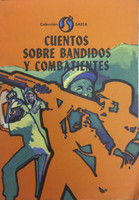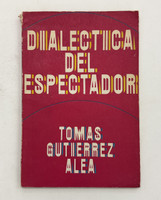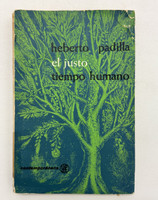- Travel
-
Exhibits
- La Portada Cubana
- Immortal Cuba: Artists Take on Their Heroes
- Seattle Poster Exhibit
- Sandra Dooley & Alejandrina Cué
- The Art of Wayacón
- Cuban Folk Art
- Cuba In Black And White
- 25 Years of Cuban Art Space
- Summer Folk Art Expo
- ¡SPRING AWAKENING FROM CUBA!
- Celebrating The Art Of Cuban Women
- Celebrating Paper, Affordable Art from Cuba
- Art of the Revolution
- Outsider Art
- Lost and Found
- En la lucha: Celebrating Cuban Women and Their Art
- Cuban Art Stash
- 100 Fires: 5 Cienfuegos Artists' Work on Paper
- Waya + Monte! Magic Realism in Cienfuegos
- Viva Cuba Viva! Poster Show
- Cultivando Sueños
- Black Lives Matter in Cuba Jan 9-March 27
- Leandro Soto: Crónicas visuales
- Cuban Canvas
-
Archive
- Global Reflection 2018: Spirit and Community
- Exhibit in the cloud: Contemporary Works on Paper
- MADE IN CUBA! MINNEAPOLIS EXHIBIT
- Cuban Posters and Photography from CCS collection
- AUTUMN SALE! Sept/Oct 2017
- SPRING ARTS AND CRAFT SALE
- Vuelo Directo/Non Stop: Alberto & Alejandro Lescay
- The Many Faces of Fidel
- Somos
- Made in Cuba!
- The US empire in Cuban graphics
- Made in Cuba/Seattle exhibit
- Entre Nos
- Looking Back
- Cuban Art Space
- Membership/Donate
- About Us
- Cuba News
-
Bibijaguas (leaf-cutter ants) represents an important early publication in revolutionary Cuba's effort to develop national literature. Victor Agostini (born New York, 1908) returned to Cuba during adolescence and worked for seventeen years in a Canadian bank in Havana before his literary career emerged in his thirties. His early articles and narratives appeared in El Bancario, and he published essays on Faulkner and Hemingway before releasing his first book Hombres y Cuentos. Following the revolution, his work appeared in the influential Casa de las Américas anthology Nuevos cuentistas cubanos.
The cover design employs a striking olive-green background with distressed, weathered typography spelling "BIBIJAGUAS" in cream letters that appear cracked and textured, evoking both the natural world of the leaf-cutter ants and the worn surfaces of everyday Cuban life. The brown semicircular footer creates a grounding horizon line, with the Ediciones Unión/Cuento logo prominently displayed. This raw, organic aesthetic reflects the earthbound realism of Agostini's narrative style.
The five stories in this collection span a ten-year period, with the first three written before the revolution and the final two reflecting the transformation of Cuban society. Agostini's principal literary interests lie in satire and psychology, exploring the relationship between literature and life. Notably, the story "Las Barbas" (The Beards) depicts unexpected hair growth appearing on a character—written years before Agostini himself grew a beard, and published during the height of Cuba's bearded revolutionary iconography when Fidel Castro and the barbudos symbolized revolutionary masculinity and commitment.
The collection includes "Yo, un Cuento" (I, a Story), the title story "Bibijaguas," "Las Barbas," "Parto sin Dolor" (Birth Without Pain), and "Pueblo" (Town/People). Published in 1963 by UNEAC and printed by Empresa Consolidada de Artes Gráficas, this book represents the early years of revolutionary cultural production when writers like Agostini were navigating between pre-revolutionary literary traditions and emerging revolutionary themes.
-
-
Discover More at the Center for Cuban Studies







